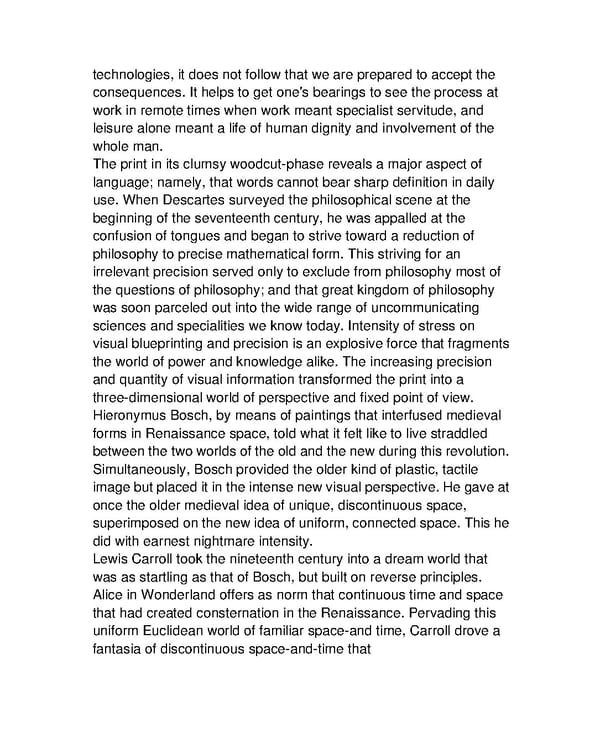technologies, it does not follow that we are prepared to accept the consequences. It helps to get one's bearings to see the process at work in remote times when work meant specialist servitude, and leisure alone meant a life of human dignity and involvement of the whole man. The print in its clumsy woodcut-phase reveals a major aspect of language; namely, that words cannot bear sharp definition in daily use. When Descartes surveyed the philosophical scene at the beginning of the seventeenth century, he was appalled at the confusion of tongues and began to strive toward a reduction of philosophy to precise mathematical form. This striving for an irrelevant precision served only to exclude from philosophy most of the questions of philosophy; and that great kingdom of philosophy was soon parceled out into the wide range of uncommunicating sciences and specialities we know today. Intensity of stress on visual blueprinting and precision is an explosive force that fragments the world of power and knowledge alike. The increasing precision and quantity of visual information transformed the print into a three-dimensional world of perspective and fixed point of view. Hieronymus Bosch, by means of paintings that interfused medieval forms in Renaissance space, told what it felt like to live straddled between the two worlds of the old and the new during this revolution. Simultaneously, Bosch provided the older kind of plastic, tactile image but placed it in the intense new visual perspective. He gave at once the older medieval idea of unique, discontinuous space, superimposed on the new idea of uniform, connected space. This he did with earnest nightmare intensity. Lewis Carroll took the nineteenth century into a dream world that was as startling as that of Bosch, but built on reverse principles. Alice in Wonderland offers as norm that continuous time and space that had created consternation in the Renaissance. Pervading this uniform Euclidean world of familiar space-and time, Carroll drove a fantasia of discontinuous space-and-time that
 Understanding Media by Marshall McLuhan Page 179 Page 181
Understanding Media by Marshall McLuhan Page 179 Page 181